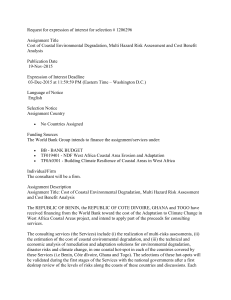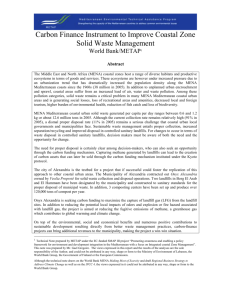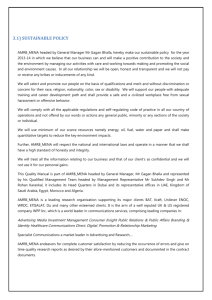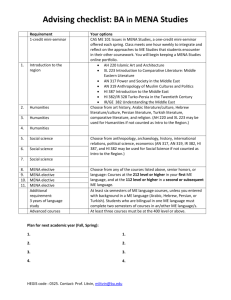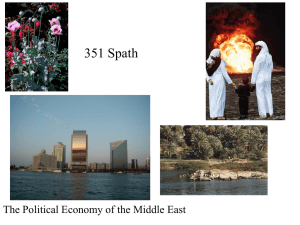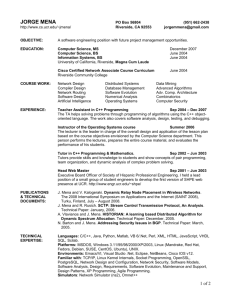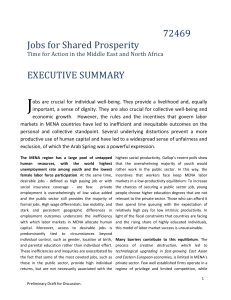File
advertisement
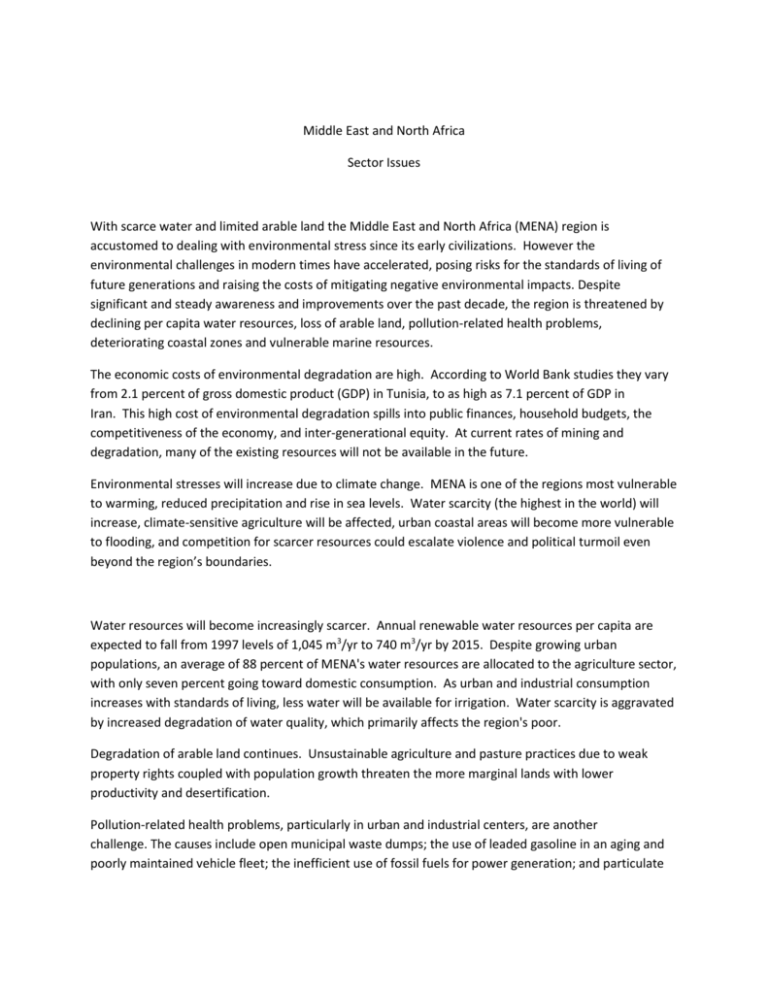
Middle East and North Africa Sector Issues With scarce water and limited arable land the Middle East and North Africa (MENA) region is accustomed to dealing with environmental stress since its early civilizations. However the environmental challenges in modern times have accelerated, posing risks for the standards of living of future generations and raising the costs of mitigating negative environmental impacts. Despite significant and steady awareness and improvements over the past decade, the region is threatened by declining per capita water resources, loss of arable land, pollution-related health problems, deteriorating coastal zones and vulnerable marine resources. The economic costs of environmental degradation are high. According to World Bank studies they vary from 2.1 percent of gross domestic product (GDP) in Tunisia, to as high as 7.1 percent of GDP in Iran. This high cost of environmental degradation spills into public finances, household budgets, the competitiveness of the economy, and inter-generational equity. At current rates of mining and degradation, many of the existing resources will not be available in the future. Environmental stresses will increase due to climate change. MENA is one of the regions most vulnerable to warming, reduced precipitation and rise in sea levels. Water scarcity (the highest in the world) will increase, climate-sensitive agriculture will be affected, urban coastal areas will become more vulnerable to flooding, and competition for scarcer resources could escalate violence and political turmoil even beyond the region’s boundaries. Water resources will become increasingly scarcer. Annual renewable water resources per capita are expected to fall from 1997 levels of 1,045 m3/yr to 740 m3/yr by 2015. Despite growing urban populations, an average of 88 percent of MENA's water resources are allocated to the agriculture sector, with only seven percent going toward domestic consumption. As urban and industrial consumption increases with standards of living, less water will be available for irrigation. Water scarcity is aggravated by increased degradation of water quality, which primarily affects the region's poor. Degradation of arable land continues. Unsustainable agriculture and pasture practices due to weak property rights coupled with population growth threaten the more marginal lands with lower productivity and desertification. Pollution-related health problems, particularly in urban and industrial centers, are another challenge. The causes include open municipal waste dumps; the use of leaded gasoline in an aging and poorly maintained vehicle fleet; the inefficient use of fossil fuels for power generation; and particulate and sulfur-oxide emissions from industry. Hazardous waste and Persistent Organic Pollutants (POPs), such as those from obsolete pesticides, continue to pose a challenge in the region. Marine resources, including fisheries, are an important generator of income. But the fishery is being overexploited by competing fleets in the face of weak enforcement and regulation. Degradation of critical habitats by pollution and other kinds of stress compound the problems and put in jeopardy the wellbeing of vulnerable coastal communities. Coastal zones continue to deteriorate. Concentration of populations along coastal zones from migration and urbanization coupled with unregulated development adds to sources of untreated pollution and damage the scarce natural habitats that remain. Climate change will compound those effects. Water run off in MENA is projected to drop by 20% to 30% in most of MENA by 2050. The Intergovernmental Panel on Climate Change’s (IPCC) Fourth Assessment Report estimates an increase in temperature of up to two degrees in the next 15-20 years and of over four degrees by the end of the century (the increase is higher for faster emission scenarios)
